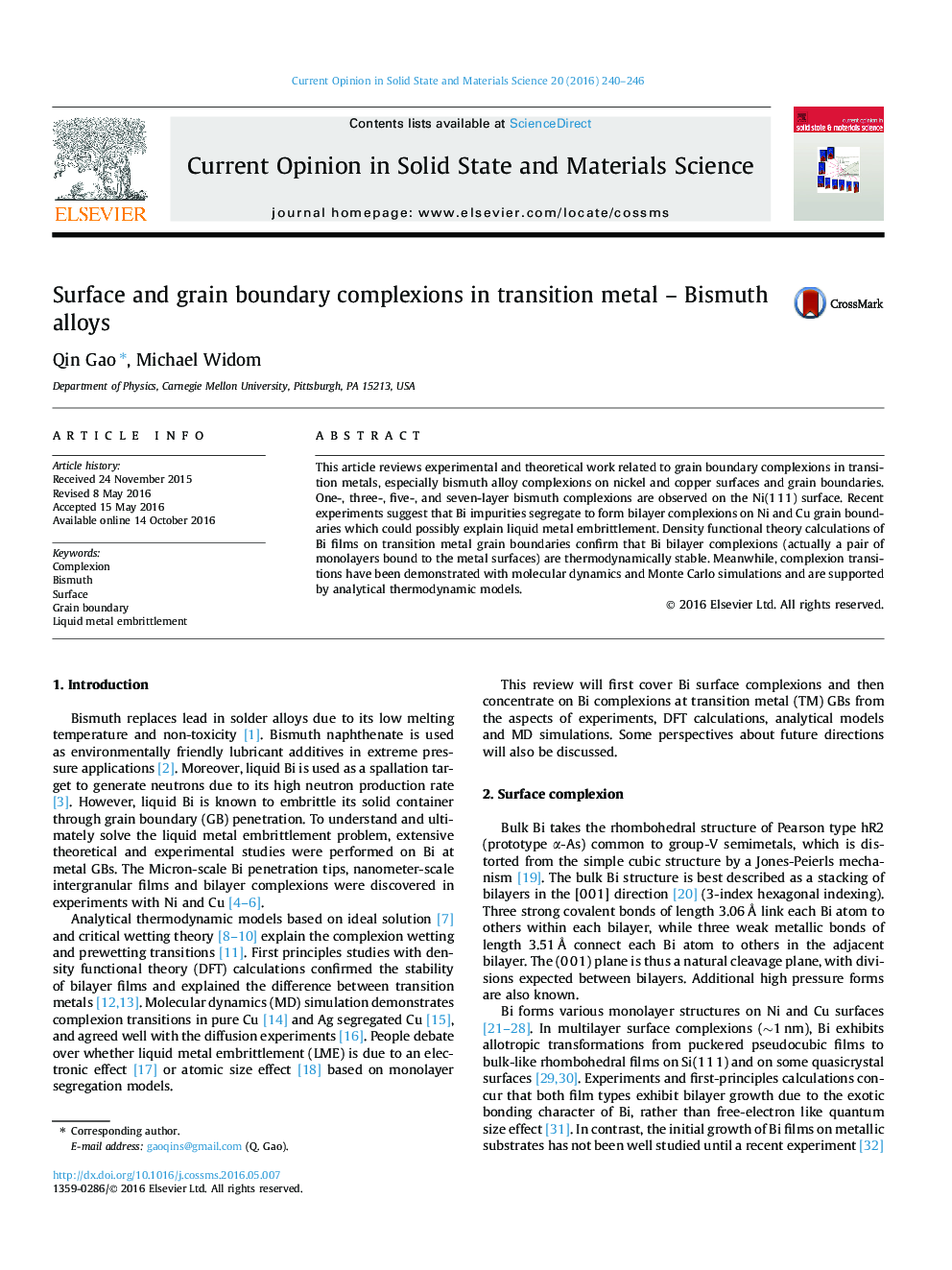| Article ID | Journal | Published Year | Pages | File Type |
|---|---|---|---|---|
| 5451496 | Current Opinion in Solid State and Materials Science | 2016 | 7 Pages |
Abstract
This article reviews experimental and theoretical work related to grain boundary complexions in transition metals, especially bismuth alloy complexions on nickel and copper surfaces and grain boundaries. One-, three-, five-, and seven-layer bismuth complexions are observed on the Ni(1Â 1Â 1) surface. Recent experiments suggest that Bi impurities segregate to form bilayer complexions on Ni and Cu grain boundaries which could possibly explain liquid metal embrittlement. Density functional theory calculations of Bi films on transition metal grain boundaries confirm that Bi bilayer complexions (actually a pair of monolayers bound to the metal surfaces) are thermodynamically stable. Meanwhile, complexion transitions have been demonstrated with molecular dynamics and Monte Carlo simulations and are supported by analytical thermodynamic models.
Related Topics
Physical Sciences and Engineering
Materials Science
Materials Chemistry
Authors
Qin Gao, Michael Widom,
